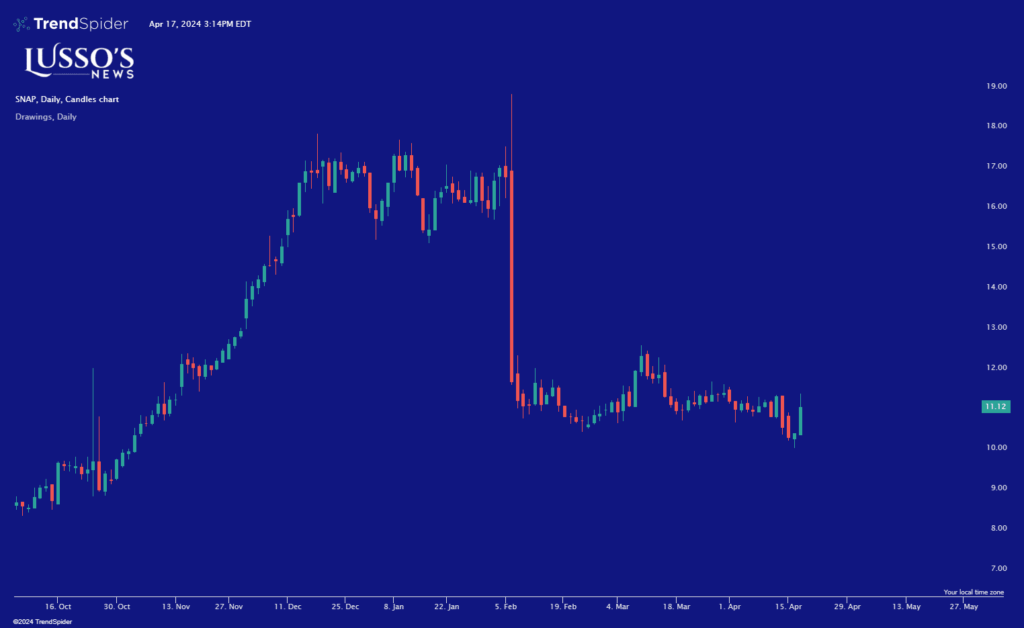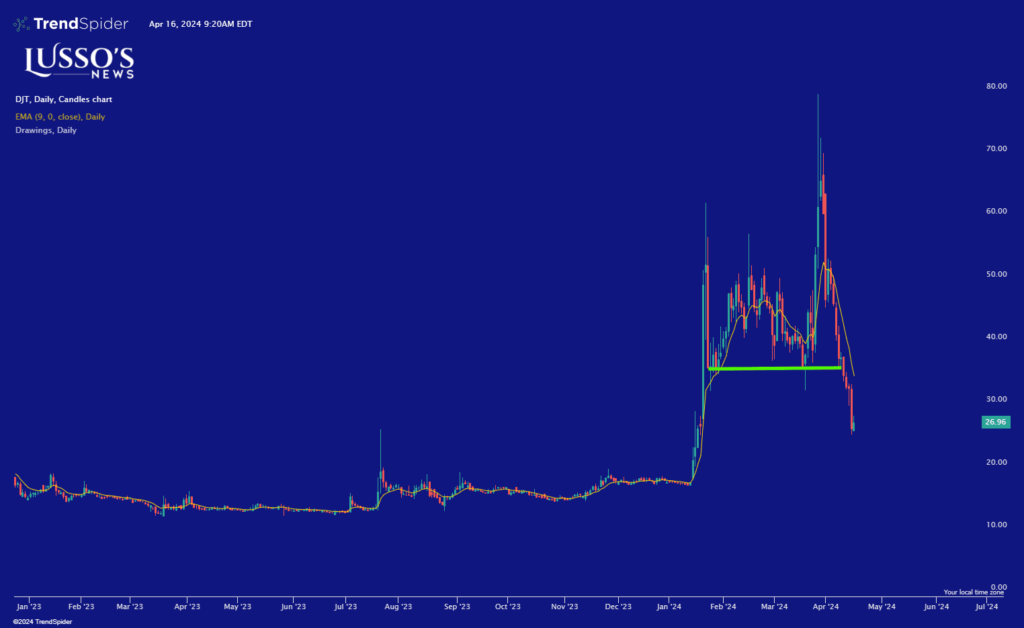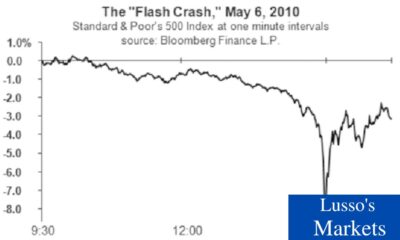Business
Nvidia’s Earnings: A Critical Moment for the Markets

DO NOT MISS THIS FREE OPPORTUNITY!
ARE YOU A TRADER?
DO YOU WANT FREE STOCK PICKS?
CHECK THIS OUT….
Ready to elevate your trading game with the next big winner? Don’t miss out – join the savvy investors who are already benefiting from our Wall St veteran’s free SMS alerts. Act now! Sign up at https://slktxt.io/ZmRx or send ‘FREE’ to 844-722-9743 and be the first to get the insider scoop on what’s hot in the market
As we stand on the cusp of Nvidia’s (NVDA) fourth quarter earnings release, the anticipation within the investment community is palpable. This event is not just any routine earnings announcement; it’s poised to be the most significant company result of the year so far.
Nvidia, a titan in the semiconductor industry, finds itself at a pivotal juncture, with its forthcoming earnings potentially serving as a turning point for broader market sentiments.
This article aims to provide a comprehensive overview of Nvidia’s market position, the expectations for its earnings, and the potential implications for investors new to the stock market.
Nvidia’s Market Surge
Nvidia has witnessed a meteoric rise, with its stock price soaring approximately 47 percent this year alone, propelling the company past tech behemoths Amazon (AMZN) and Alphabet (GOOG, GOOGL) in terms of market capitalization.
This surge is on the back of an already impressive rally of over 200 percent in 2023. Such remarkable growth has catapulted Nvidia into the spotlight, making it a barometer for the tech sector and the broader market.
The Price of Success
However, Nvidia’s success story comes with its own set of challenges. The company’s valuation has skyrocketed, raising the stakes for its upcoming earnings report. Investors and analysts alike are keenly awaiting forward guidance that could justify such a lofty valuation.
There’s a consensus that Nvidia’s position as a leader in AI-driven technologies has significantly contributed to its valuation.
Yet, as one Bank of America analyst pointed out, the market’s response to Nvidia’s earnings, while expected to be significant, may also be fleeting.
Revenue Expectations
The anticipation builds around Nvidia’s revenue, which is expected to triple this quarter to over $20 billion, a stark contrast to its full-year revenue of $27 billion in 2023.
This growth is largely attributed to its data center business, accounting for roughly 80 percent of the company’s sales.
Analysts from Wedbush and other financial institutions are particularly focused on the data center results, expecting them to be a key driver of Nvidia’s performance.

Market Implications
The broader market sentiment is one of cautious optimism mixed with anxiety. Nvidia’s results are not just a reflection of the company’s health but are also seen as an indicator of the tech sector’s vitality and, by extension, the overall market direction.
With recent concerns over inflation and market volatility, Nvidia’s earnings report is viewed as a potential catalyst for market movement. Investors, especially those new to the stock market, are advised to watch closely, as the outcomes could provide valuable insights into market dynamics and investment strategies.
Nvidia stands at the forefront of technological innovation, particularly in the realm of artificial intelligence and data center operations. As such, its financial health and strategic direction are of paramount interest to investors, market analysts, and industry observers.
For individuals new to the stock market, understanding the significance of Nvidia’s earnings report offers a unique lens through which to view market trends, investor sentiment, and the interplay between company performance and market valuation. Regardless of the outcome, Nvidia’s fourth quarter earnings are set to be a defining moment for the markets, with potential implications for investment portfolios and market outlooks.
As we await the results, the tech sector and the broader markets hold their breath, ready to analyze and react to Nvidia’s latest financial chapter.
Business
Mortgage Rates Hit 7.1%: Analyzing the Impact on the U.S. Housing Market

DO NOT MISS THIS FREE OPPORTUNITY!
ARE YOU A TRADER?
DO YOU WANT FREE STOCK PICKS?
CHECK THIS OUT….
Ready to elevate your trading game with the next big winner? Don’t miss out – join the savvy investors who are already benefiting from our Wall St veteran’s free SMS alerts. Act now! Sign up at https://slktxt.io/ZmRx or send ‘FREE’ to 844-722-9743 and be the first to get the insider scoop on what’s hot in the market
The U.S. housing market is experiencing significant pressure as mortgage rates have surged past the 7 percent mark for the first time this year. According to a recent report by Freddie Mac, the average rate on the 30-year mortgage, the most favored home loan across the nation, climbed to 7.1 percent this week, marking the highest level since last November. This spike poses a considerable challenge to millions of potential home buyers and could further slow down a market already showing signs of cooling.

Rising Rates and Their Ripple Effects
Last year, mortgage rates peaked at nearly 8 percent, a height unseen since 2000. This upward trend in rates began in 2021, significantly driven by Federal Reserve policies aimed at curbing inflation through higher benchmark interest rates. Despite a reduction in inflation rates, they remain above the Fed’s 2 percent target, leading to expectations that high borrowing costs may persist.
The immediate effect of these climbing rates is twofold. Firstly, potential home buyers face increased costs, making homeownership less accessible for many Americans. This economic strain is causing prospective buyers to deliberate intensely on whether to purchase now or delay in hopes of a rate decrease later in the year.
Secondly, existing homeowners, who secured their properties at lower interest rates, are reluctant to sell, fearing higher rates on a new mortgage. This hesitancy to sell is contributing to a decreased housing supply, inadvertently pushing home prices up despite fewer transactions.
Market Slowdown and Policy Responses
Data from the National Association of Realtors (NAR) underscores the market’s response to these economic pressures, with sales of existing homes dropping by 4.3 percent in March and 3.7 percent year-over-year. This downturn reflects broader economic frustrations and the daunting prospect of entering a market characterized by both high prices and high rates.
In a potentially mitigating development, the NAR recently agreed to settle litigation that would eliminate the standard real estate sales commission. Traditionally, sellers would pay a 5 to 6 percent commission, a cost typically passed on to buyers, inflating home prices. This change could, theoretically, reduce overall home purchasing costs.
Broader Economic Implications
The rising mortgage rates, coupled with the Fed’s indications of maintaining a high-interest rate environment, have pushed Treasury yields higher, influencing mortgage rates further. The 10-year Treasury yield has notably increased to about 4.6 percent since the start of the year.
As the market adjusts to these new economic realities, the overarching question remains: How many potential buyers can withstand further rate increases? Freddie Mac’s chief economist, Sam Khater, suggests that the future of the housing market is still very much uncertain, with potential buyers weighing the risks of higher future costs against the possibility of rate decreases.
Conclusion
The surge in mortgage rates above 7 percent represents more than just a numerical threshold; it is a significant barrier to entry for many Americans aspiring to homeownership. This development tests the resilience of the U.S. housing market and calls for close monitoring of future economic policies and market adaptations. As the landscape evolves, potential homebuyers and industry stakeholders alike must navigate these challenging waters with careful consideration and strategic planning.
Business
Potential Ban on TikTok: A Boon for Snapchat and Meta?

DO NOT MISS THIS FREE OPPORTUNITY!
ARE YOU A TRADER?
DO YOU WANT FREE STOCK PICKS?
CHECK THIS OUT….
Ready to elevate your trading game with the next big winner? Don’t miss out – join the savvy investors who are already benefiting from our Wall St veteran’s free SMS alerts. Act now! Sign up at https://slktxt.io/ZmRx or send ‘FREE’ to 844-722-9743 and be the first to get the insider scoop on what’s hot in the market
The U.S. House of Representatives’ recent move to potentially ban TikTok via legislation could have significant implications for the competitive landscape of social media, particularly benefiting companies like Snapchat and Meta (formerly Facebook). This legislative effort, part of a broader package for Israel and Ukraine, underscores growing concerns about TikTok’s Chinese ownership and its implications for national security.
Strategic Advantage for Competitors
Snapchat and Meta, two of the largest social media platforms in the United States, stand to gain from a TikTok ban. TikTok, with its 170 million U.S. users, has become a dominant force in social media, particularly among younger audiences who engage with its dynamic content ranging from dance videos to political discourse. A ban could leave a vast user base seeking alternative platforms, and Snapchat and Meta are well-positioned to absorb this migration.

1. User Engagement and Growth
Both Snapchat and Meta have been investing heavily in video and augmented reality—technologies at the heart of TikTok’s appeal. Snapchat’s innovative AR filters and Meta’s investment in Reels and virtual reality could see increased user engagement as TikTok users look for similar experiences elsewhere.
2. Advertising Revenue
A shift in user base would also likely lead to an increase in advertising revenue for Snapchat and Meta. Advertisers looking to capitalize on the highly engaged, predominantly younger audience that TikTok attracted would turn to these platforms, which offer robust ad-targeting systems and massive global reach.
3. Market Position and Shares
From a financial perspective, the potential TikTok ban could lead to a bullish outlook for stocks like Snapchat and Meta. Investors may see these companies as primary beneficiaries in the social media space, driving up share prices in anticipation of user growth and increased market share.
Challenges and Considerations
While the potential ban could offer a tactical advantage to companies like Snapchat and Meta, it also presents challenges. These companies would need to innovate continually to satisfy the diverse needs of former TikTok users. Moreover, the legislative move against TikTok raises broader concerns about internet freedom and regulation, which could eventually impact other social media platforms as well.
Ethical and Regulatory Landscape
The controversy surrounding TikTok has highlighted the complex interplay between technology, politics, and user privacy. As Snapchat and Meta potentially benefit from TikTok’s troubles, they must also navigate the ethical and regulatory challenges that arise from increased scrutiny on data practices and content moderation.
Conclusion
In conclusion, while the legislative push against TikTok could destabilize the current social media hierarchy, it also presents significant opportunities for companies like Snapchat and Meta to capitalize on a potential market void. However, these gains are not without challenges, requiring careful strategic planning and responsive innovation to harness effectively. Investors and market analysts will be watching closely as this situation develops, potentially reshaping the competitive dynamics of the social media industry.
Business
YUUUUGE, $DJT TMTG Launches Live TV Streaming Platform via Truth Social

DO NOT MISS THIS FREE OPPORTUNITY!
ARE YOU A TRADER?
DO YOU WANT FREE STOCK PICKS?
CHECK THIS OUT….
Ready to elevate your trading game with the next big winner? Don’t miss out – join the savvy investors who are already benefiting from our Wall St veteran’s free SMS alerts. Act now! Sign up at https://slktxt.io/ZmRx or send ‘FREE’ to 844-722-9743 and be the first to get the insider scoop on what’s hot in the market
Trump Media & Technology Group Corp. (NASDAQ:DJT), known as TMTG, has officially concluded the research and development phase for its innovative live TV streaming platform. This development marks a significant step for the operator of the social media platform, Truth Social. After six months of rigorous testing across its Web and iOS platforms, TMTG is now set to expand its content delivery network (CDN), enhancing the platform’s streaming capabilities.
Strategic Rollout in Phases
TMTG’s rollout of its streaming service is planned in three strategic phases, designed to broaden its reach and accessibility:
- Phase 1: Integration of the CDN with the Truth Social app, extending live TV streaming services to users on Android, iOS, and Web.
- Phase 2: The launch of standalone over-the-top (OTT) streaming apps for mobile devices and tablets, facilitating easier access to the platform’s content.
- Phase 3: Expansion to home television systems by introducing streaming apps compatible with various home TV setups.

Diverse and Inclusive Content Offering
The new streaming platform is set to host a variety of content, including live TV, news networks, religious channels, and family-friendly programming such as films and documentaries. TMTG aims to serve as a sanctuary for content and creators at risk of cancellation or suppression on other platforms, promising a safe haven for free expression and diverse viewpoints.
A Commitment to High-Quality Streaming and Free Speech
Devin Nunes, CEO of TMTG, expressed his enthusiasm for the project, highlighting the platform’s commitment to providing a permanent home for high-quality news and entertainment. “We want to let these creators know they’ll soon have a guaranteed platform where they won’t be cancelled,” said Nunes.
The CDN developed by TMTG is engineered to be user-friendly, cost-effective, and independent of Big Tech influences. It incorporates advanced technology designed to optimize video streaming speed, performance, and security while minimizing disruptions. This initiative is expected to substantially enhance the user experience on Truth Social, reinforcing the platform’s mission of promoting free speech and serving its robust community of users and supporters.
Conclusion: A Strategic Expansion by TMTG
As TMTG transitions into the next phase of its development with the rollout of its live TV streaming platform, the company is poised to make significant impacts in the media and technology landscape. This expansion not only diversifies TMTG’s offerings but also strengthens its position as a champion of free speech and alternative media. The strategic development of its CDN and phased rollout plan demonstrates TMTG’s commitment to growth and innovation, potentially setting new standards in the streaming content arena.
-

 Markets2 months ago
Markets2 months agoUnderstanding Viking Therapeutics’ Position in the Biopharma Sector: A Beginner’s Guide
-

 Markets2 months ago
Markets2 months agoThe AI Revolution: How Super Micro Computer (SMCI) Skyrocketed in the Tech Rally
-

 Markets2 months ago
Markets2 months agoMastering the Market: A Guide to the Fundamentals of Value Investing
-

 Trading2 months ago
Trading2 months ago3 Must-Watch AI Stocks in 2024: Unveiling ShiftPixy, C3.ai, and CXApp’s Market Potential
-

 Lusso's Exclusives2 months ago
Lusso's Exclusives2 months agoWall Street Veteran Owns A Crap Ton Of Monday.com Stock [NASDAQ:MNDY]
-

 Markets3 months ago
Markets3 months agoJetBlue and Spirit Seek Expedited Appeal to Revive $3.8 Billion Merger
-

 Markets3 months ago
Markets3 months agoGMBL Stock: A Trader’s Insight into Esports Entertainment Group
-

 Business2 months ago
Business2 months agoDeciphering HSBC Holdings plc’s Fiscal Landscape: An In-depth Analysis of 2023’s Outcomes
-

 Business3 months ago
Business3 months agoLQR HOUSE’s Sean Dollinger Teams Up with Michael Jordan’s Business Partner Bjarne Borg in Exclusive Interview
-

 Markets2 months ago
Markets2 months agoPlus500 Ltd’s Financial Overview: A Glimpse into 2023’s Performance
-

 Markets2 weeks ago
Markets2 weeks agoBoeing’s Proactive Measures Ahead of Whistleblower Hearing




























